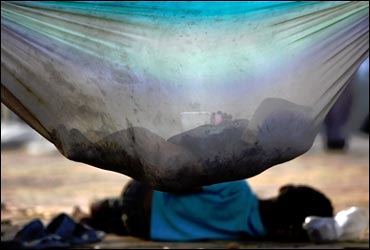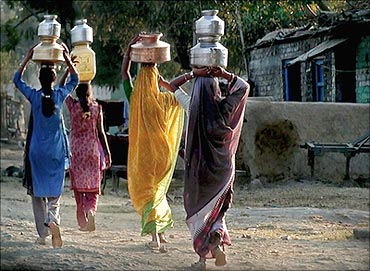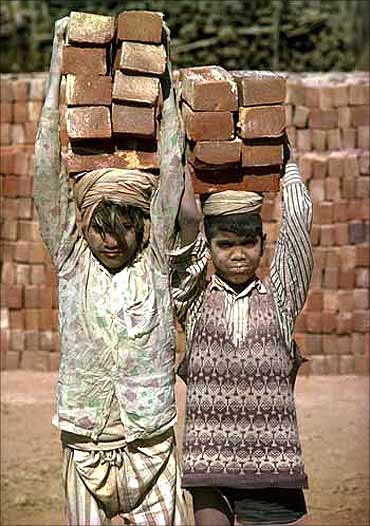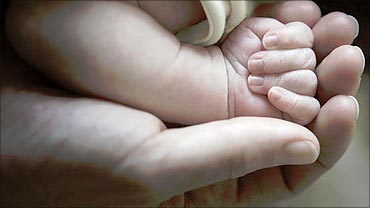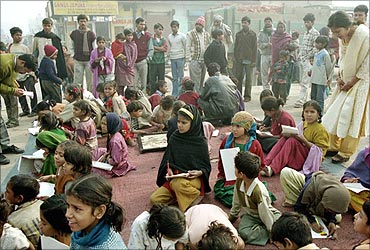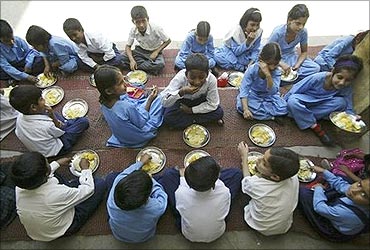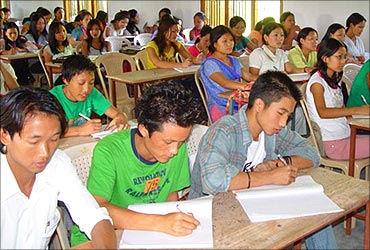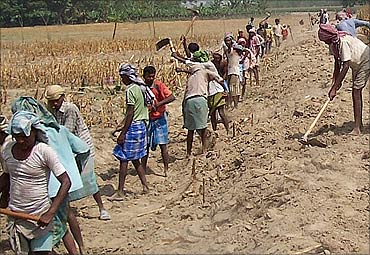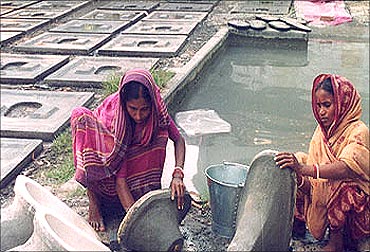 | « Back to article | Print this article |
What the Budget means for the social sector
According to Human Development Report (HDR) 2010, the Human Development Index (HDI) for India was 0.519 in 2010 with an overall global ranking of 119 (out of the 169 countries).
We are still in the medium human development category and countries such as China, Sri Lanka, Thailand, Philippines, Egypt, Indonesia, and South Africa have better overall HDI ranking than us. There is a need for much faster and wider spread of basic health and education.Despite overall allocation increasing by 17 per cent over last year, budget seems to lack the punch for accelerating inclusive development agenda. PwC analyses the implication of Budget allocations for select schemes in the social sector.
Click NEXT to read on
What the Budget means for the social sector
Click NEXT to read on
What the Budget means for the social sector
NRHM, the flagship programme to improve health status, seeks to provide accessible, affordable and effective primary care, especially to poor and vulnerable rural population.
| 2009-10 | 2010-11 | 2011-12 | |
| Allocation (Rs crore) | 13,306 | 13,464 | 16,056 |
| Increase over previous year | 1% | 19% |
Since the launch of the NRHM, institutional deliveries have jumped from around 10 lakh to 90 lakh; largely riding on the incentives provided under Janani Suraksha Scheme (JSY). The increased plan outlay will augur well for this scheme. Convergence of this scheme with other related schemes is essential to reap greater benefits.
Click NEXT to read on
What the Budget means for the social sector
INTEGRATED CHILD DEVELOPMENT SERVICES (ICDS)
The key objective of the scheme is to ensure adequate nutritional and health care for pregnant and nursing women; as well as children under six years. There has been significant progress in the implementation in terms of increase in number of operational projects, anganwadi centres (AWCs) and coverage of beneficiaries. However, based on the National Health Family Survey 2005-06, the all India average for malnourished children is 47 per cent and 58 per cent of pregnant women are anaemic. These figures suggest how far we are lagging behind.| 2009-10 | 2010-11 | 2011-12 | |
| Allocation (Rs crore) | 13,306 | 13,464 | 16,056 |
| Increase over previous year | 1% | 19% |
The proposal in the Budget to raise the remuneration levels of anganwadi workers and anganwadi helpers is a welcome move. The increased allocation is a good sign for the scheme.
Click NEXT to read on
What the Budget means for the social sector
| 2009-10 | 2010-11 | 2011-12 | |
| Allocation (Rs crore) | 265 | 446 | 280 |
| Increase over previous year |
| 68% | -37% |
The scheme is being proposed to cover other unorganised sector workers in hazardous mining and associated industries like slate and slate pencil, dolomite, mica and asbestos. The plan outlay for the scheme is far below the expectation.
Click NEXT to read on
What the Budget means for the social sector
Education
In the Union Budget 2011-12, total allocation for education sector has been increased by 24 per cent to Rs 52,057 crore. The elementary education in India has made strides in recent years. However, the challenge of reducing dropout, increasing retention and maintaining quality of education persists. The dropout rate continues to be high (primary level Boys 28.7 per cent, Girls 21.8 per cent), and elementary level (Boys 48.7 per cent, Girls 49 per cent).SARVA SHIKSHA ABHIYAN (SSA):
The objective of SSA is to achieve universalisation of elementary education. In addition to strengthening school infrastructure, scheme aims at providing quality education and promotes inclusiveness through regional interventions.
| 2009-10 | 2010-11 | 2011-12 | |
| Allocation (Rs Crore) | 13,100 | 15,000 | 21,000 |
| Increase over previous year | 14% | 40% |
In the Budget, Rs 21,000 crore has been allocated for SSA as whole, which is 40 per cent higher than Budget for 2010-11 and expected to provide boost to elementary education initiatives.
Click NEXT to read on
What the Budget means for the social sector
| 2009-10 | 2010-11 | 2011-12 | |
| Allocation (Rs Crore) | 8,000 | 9,440 | 10,380 |
| Increase over previous year | 18% | 9.6% |
Click NEXT to read on
What the Budget means for the social sector
| 2009-10 | 2010-11 | 2011-12 | |
| Allocation (Rs Crore) | 549 | 1,357 | 2,179 |
| Increase over previous year |
| 147% | 61% |
Click NEXT to read on
What the Budget means for the social sector
| 2009-10 | 2010-11 | 2011-12 | |
| Allocation (Rs Crore) | 39,100 | 40,100 | 40,000 |
| Increase over previous year | 3% | -0.3% |
The budgetary provisions have been maintained at stagnant level. Recent announcement of the Ministry of Rural Development to enhance the wage rate in parity with the CPI for Agricultural Labour is expected to enhance utilisation in less responsive states. However, allocation in the Budget with revised wage rates looks inadequate.
Click NEXT to read on
What the Budget means for the social sector
| 2009-10 | 2010-11 | 2011-12 | |
| Allocation (Rs Crore) | 1,200 | 1,580 | 1,650 |
| Increase over previous year | 32% | 4% |
The planned allocation has been marginally increased in the Budget. This could be sufficient considering the lower fund utilisation in past. There is a need to strengthen the core approach of the campaign to make it demand driven and people centric.
Click NEXT to read on
What the Budget means for the social sector
| 2009-10 | 2010-11 | 2011-12 | |
| Allocation (Rs Crore) | 39,100 | 40,100 | 40,000 |
| Increase over previous year | 3% | -0.3% |
The Budget outlay for National Rural Drinking Water Programme (NRDWP) for the 2011-12 has been raised marginally similar to the sanitation programme. It seems the focuses here also is on quality enhancement and complete the coverage rather than on extension. Ashok Varma
Executive Director, Government Reforms and Infrastructure Development Team members: Aditi Bhutoria, Aditi Das, Alka Chadha, Gautam Anand, Sonal Shivagunde, Sujata Mullick and Sundeep Paulose
